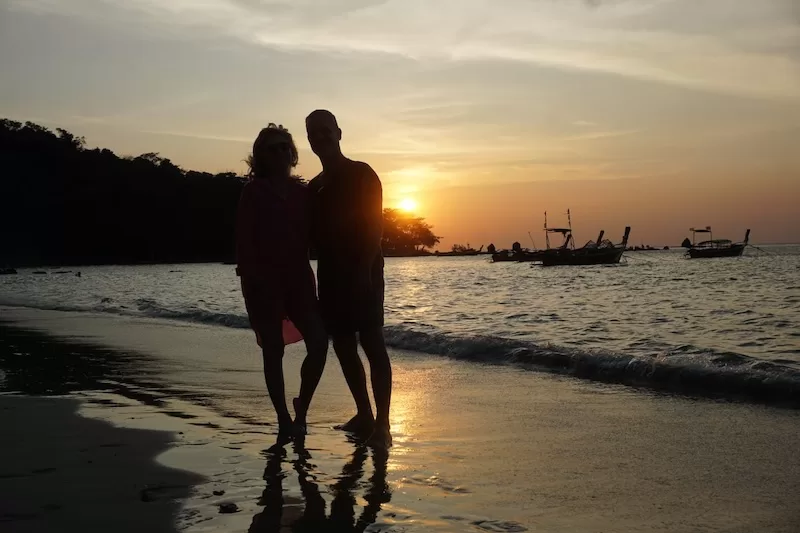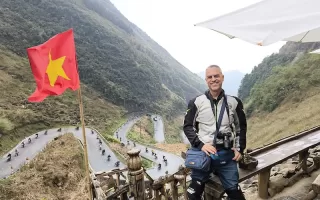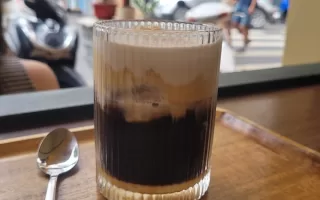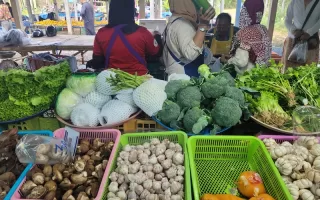After four months of living in cities and towns, we were ready for a change of pace. We were looking for a quiet island with white beaches and stunning sunsets – like the ones you see in movies.
When we arrived in Koh Lanta, we discovered we had come to just the right place.
Koh Lanta is made up of two islands:
Koh Lanta Yai is the larger main island, where most tourists go. It has sandy beaches along the entire western coast, dense jungle inland in the center, and rocky shorelines to the east.
Koh Lanta Noi is the smaller and quieter of the two. It’s home to local Muslim fishing communities and is known for its rubber and palm trees, as well as its extraordinary secluded beaches.
Recommended Places to Visit:
Old Town – Sri Raya
Originally a sea gypsy settlement, Sri Raya later developed into a trading village and eventually became the island’s port and commercial hub. Today, it serves as the capital of Koh Lanta district. You’ll find a post office, police station, Buddhist and Chinese temples, a hospital, and a long pier. When visiting, you can still see the Chinese influence, charming teakwood houses built over the water, connected by wooden walkways.
We visited Old Town on a gray, cloudy day, and luckily, the rain only started as we were leaving.
We walked along the pier, strolled the main street, and peeked into the small shops selling beachwear and shell jewelry. In the evening, we had dinner at one of the stilt restaurants overlooking the sea. The atmosphere was peaceful and calm, a lovely place to walk and dine, especially if you’re a fan of seafood.





Ban Saladan
This is the main entry point to Koh Lanta, with a small beach where all the boats dock.
Every evening, a lively market takes place here with food and drink stalls, clothing, jewelry, arts and crafts, and more.
The village also offers various stilt restaurants over the sea and massage services.
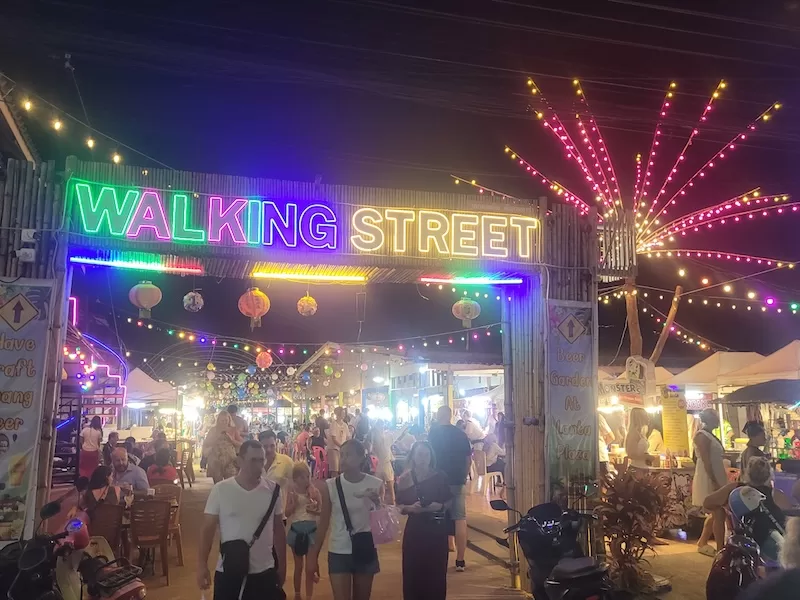




We visited in the late afternoon and evening, when the whole area is lit up and welcoming.
We tasted roti and coconut shake, and had dinner at a street stall offering pad thai cooked over flames. Part of the fun of eating street food is that you can see exactly how the dish is made, what ingredients are used, watch the process, and often have a chat with the cook.
Food from stalls is usually eaten while standing or walking, though sometimes there’s a stool or chair nearby. It’s a different kind of experience, but just as good as a restaurant meal.


We’ve been living in Koh Lanta for two weeks now, and every afternoon (after work), we head down to the beautiful beaches.
So far, we’ve only visited a few of them, discovering new hidden spots each time by entering from different access points.
All the beaches are beautiful, white sands and pleasant water. Along the beach, you’ll find restaurants, bars, and massage services.
Some of the places offer live music and/or fire shows in the evenings.
If you arrive at sunset, you’ll be treated to a special show of the sun painting the sky in vivid colors.
Information about the beaches we visited and what makes each one unique:
Kaw Kwang Beach
A long beach, white sand with shallow waters, located in the north near the Saladan Pier, right next to Klong Dao Beach. The currents are usually calm, especially at low tide, ideal for families with young children.
Klong Dao Beach
Located near Ban Saladan village, with shallow waters and white sand.
It’s full of resorts and hotels, making it a popular choice for families.



Long Beach / Phra Ae
A 4-kilometer stretch of sandy beach, lined with tall pine trees.
It’s the most developed beach, but still wide and open enough that it doesn’t feel too crowded.
There are plenty of accommodation options and beachfront restaurants, making it a favorite among families.
South of Long Beach, you’ll find the charming little bays Relax Bay and Lanta Secret Beach.

Klong Khong Beach
Known as the island’s “party beach,” it’s the center of Koh Lanta’s nightlife.
The beach is very rocky and less suited for swimming, but there’s something about it that made it my favorite.
Because of the rocks and the limited swim areas, you can find a whole world of marine life.
The waters are crystal-clear, and you can easily see small fish, crabs, sea cucumbers, and more.



Nui Beach
A tiny and beautiful hidden bay, located near Klong Nin Beach.
To find it easily and not miss the entrance path, use Google Maps. There’s a sign at the entrance.
The path to the bay goes through a forest, note: if you plan to leave after sunset, bring a flashlight, unless you want to meet monkeys face-to-face. (Don’t ask how I know that.)





Ba Kantiang Beach
A popular beach toward the southern end of Koh Lanta.
This golden-sand beach is nearly 2 kilometers long, and its crescent shape creates calm, clear waters and great swimming conditions.
There are restaurants and bars on the beach with upbeat music in the background.
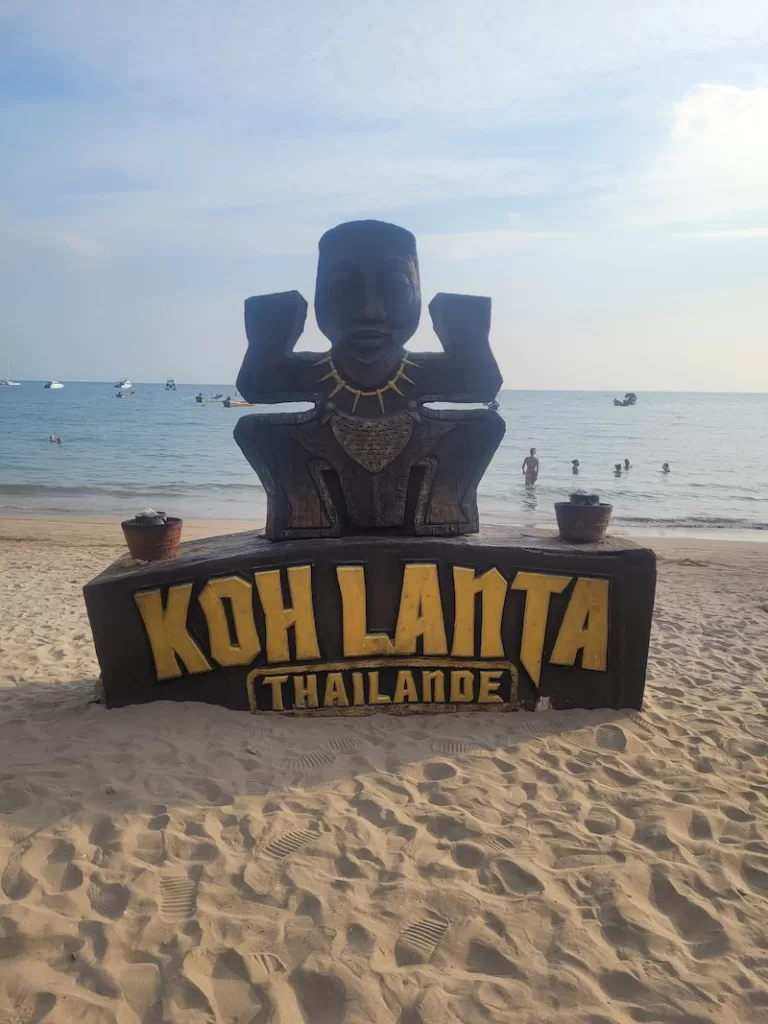



Bamboo Bay
A secluded crescent-shaped bay at the southern end, framed by cliffs and backed by jungle.
It remains mostly unspoiled and offers natural, pastoral beauty.
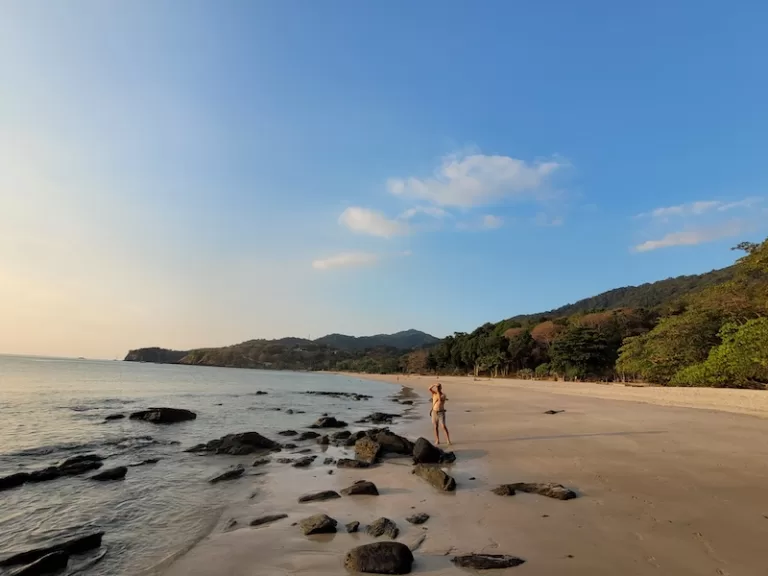



Mu Ko Lanta National Park
Here you’ll find hiking trails, long stretches of deserted beaches, and the Lighthouse Hill, which offers one of the best panoramic views on the island.
Soon I will write a post about that park.
More recommended spots on the island:
Ao Nui Bay (located south of Ba Kantiang Beach)
A small, stunning location that can be reached on foot via a steep 100-meter path.
This idyllic beach remains undeveloped due to its secluded location.
Klong Nin Beach
A peaceful beach in the southern part of the island with clear water.
The sea is great for swimming, and the beach is surrounded by trees that offer shade from the sun.
With a backdrop of mountains and tropical rainforest, the scenery is exceptional, Klong Nin is one of the best beaches in Lanta.
Klong Jark Beach
A long, quiet sandy beach. Nearby (about a 30-minute walk) is a small waterfall, best visited during the rainy season.
